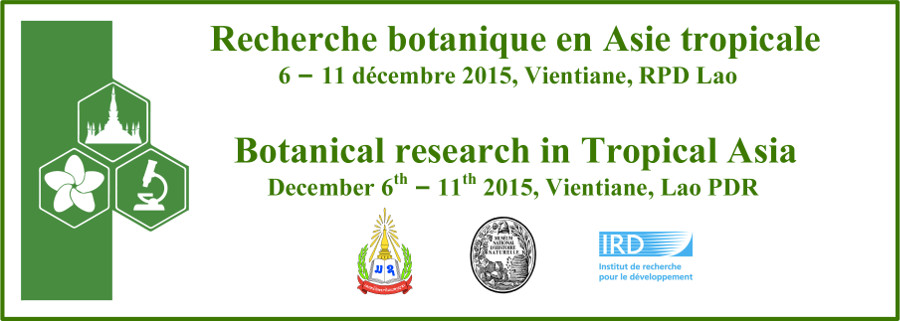Stephania Loureiro comprises about 60 species distributed in tropical and subtropical Asia, tropical Africa, and Oceania. Species of this genus which contain over 150 alkaloids together with flavonoids, lignans and steroids, are commonly used in folk medicine. Owing to the sometimes ambiguous protologues and to the high morphological similarity among species, many samples of plants used in phytochemical and pharmacological studies were identified with great uncertainty, for example S. rotunda Lour. We collected specimens in Cambodia and we had access to the collections of Paris, Kew and Berlin Herbaria.
Systematic and phytochemical investigations on the Cambodian species of Stephania were conducted.
Six species and two varieties of Stephania were recorded in Cambodia: S. rotunda Lour. [synonym: S. glabra (Roxb.) Miers], S. japonica (Thunb.) Miers var. discolor (Blume) Forman and var. timoriensis (DC.) Forman, S. oblata Craib, S. pierrei Diels and S. venosa (Blume) Spreng. Typification of S. rotunda and S. pierrei was made and more precise diagnoses were provided (Hul et al. 2014, Dary et al. 2015 in press). A key for the Cambodian species was written.
Analytical studies of dichloromethane extracts indicated relatively distinct chemical composition of the species of Stephania. We will discuss the relationships among the Cambodian species of Stephania based on morphological and molecular characters as well as chemical compounds.
A micro-waved & ultrasound assisted extraction of major components and their quantification by Ultra High Liquid Chromatography (UHPLC) will be performed.
A pharmacological evaluation of the plant extracts is indeed necessary to justify scientifically their traditional use in Cambodia.
These pharmacological studies will add to our understanding of the taxonomic situation of the different species of Stephania in Cambodia.
- Poster

 PDF version
PDF version

